Microsoft WILL address mobile at Build — but not how you expect
Windows phone fans are hoping for at least a tidbit of information on Microsoft's mobile strategy from the upcoming Build developer conference. They'll get it ... but maybe not in the way they expect.
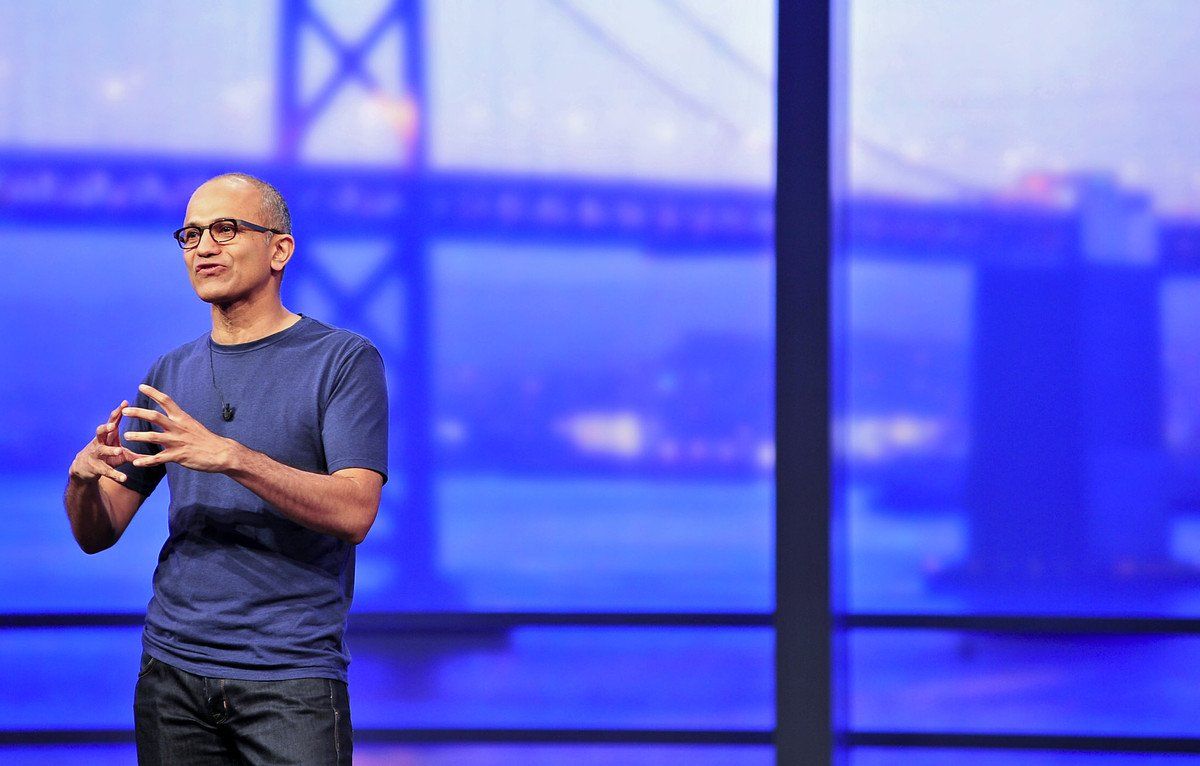
To say that being a Windows phone fan is a roller coaster ride of expectations, disappointment and emotions would be an understatement. We've rested our hopes for the platform on things like Windows Phone 8, the Lumia's 950 and 950 XL, and Windows 10 Mobile.
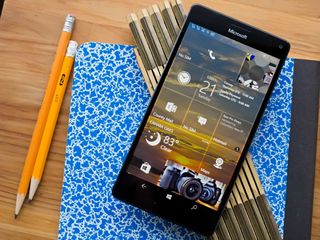
We got excited, but when things actually got worse as more developers left the platform and market share plummeted (predictably given retrenchment), frustration and disappointment returned in earnest. Many fans just couldn't take it anymore.
Is the Windows phone fan community of loyalists imploding?
A steady exodus from the platform to Android and the iPhone has ensued. The "app gap," no new first-party hardware, limited OEM support and silence from Microsoft about its strategy regarding these issues has crushed the faith of many of the faithful.
Still, those fans who remain are hoping Microsoft will let us in on what's next in mobile. Most fans would love the full scoop but would be content with a sliver of legitimate news to ignite a spark of hope. Most analysts are not expecting an outright disclosure from Microsoft about its plans for Windows 10 Mobile, nor am I. It is, however, inevitable that Microsoft will talk about Windows on mobile in some form or another at the Build developer conference later this week. You will just have to listen very closely.
But isn't Windows phone dead?
Windows phone is dead – again. So claims the internet, social media and everyone inclined to join in on this quarterly ritual of echoing the platform's demise. This particular round of articles, tweets and comments have been fueled by Microsoft's disclosure on its most recent investor's call. First-party phones are not producing any revenue. That's what happens when a company stops producing a product in a particular market though.
After the Lumia 650, Microsoft stopped making first-party Windows phones. Consequently, revenue from first-party Windows phones fell and will continue to fall. This isn't news. It is a logical progression of the information we've had for months.
Get the Windows Central Newsletter
All the latest news, reviews, and guides for Windows and Xbox diehards.
Exactly!😉 Windows phone isn't dead and here's why it may never die: https://t.co/F0oOKjuKAJ 😎 https://t.co/mtQAili1OYExactly!😉 Windows phone isn't dead and here's why it may never die: https://t.co/F0oOKjuKAJ 😎 https://t.co/mtQAili1OY— Jason L Ward (@JLTechWord) May 1, 2017May 1, 2017
However, Microsoft is still actively developing Windows 10 Mobile. The platform is still available to any OEM that desires to use it as part of its mobile strategy. Admittedly, OEM support is not what Microsoft or its fans hoped it would be when Microsoft announced the retrenchment of first-party smartphones from the market two years ago. But there is some OEM support.
Additionally, it seems that Microsoft CEO Satya Nadella has reconfirmed an earlier, but as yet unfulfilled, promise to make Windows phones even if no OEMs do.:
"We make phones today, we have OEMs like HP making phones and others and we picked a very specific area to focus on which is management, security, and this one particular feature that we have called Continuum, which is a phone that can even be a desktop.[And] we're looking for what's the next change in form and function.What we've done with Surface is a good example. No one before us thought of 2-in-1s, and we created that category and made it a successful category to the point where there are more 2-in-1s coming. And that's what we want to do. So when you say we'll make more phones, I'm sure we'll make more phones, but they will not look like phones that are there today."
This assertion refutes the erroneous claims that Microsoft is done with mobile on first-party phone hardware. Fans looking for just a sliver of hope about Windows phone's future may have gotten it before Build even kicked off. This is by no means a claim of future success, nor the present health of the platform. It is, however, evidence of Microsoft's resolve to continue with its mobile strategy via the development of its mobile platform on first-party hardware.
Why Microsoft might not talk explicitly about Windows Mobile at Build
What we presume will be Microsoft's continued silence on the specifics of Windows 10 Mobile at Build can be interpreted in two ways. Some see it as an indication that Microsoft has absolutely no idea of what direction it is going with mobile and therefore has nothing to share. The company's fumbles in mobile and the current state of the platform lend some merit to this interpretation.
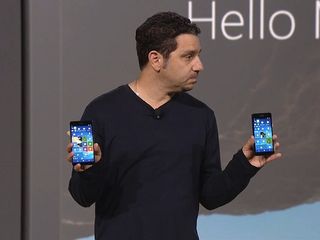
Conversely, some interpret the company's silence as a reflection of intentional secrecy about what Nadella referred as an "ultimate mobile device." This too has precedence. For instance, the Surface and HoloLens were well-kept secrets until the company was ready to present them. Additionally, the company is still actively developing Windows 10 Mobile with the goal of remaining technologically relevant with ARM and cellular on mobile devices.
Both conclusions can be argued and supported, though I am more inclined toward the latter interpretation. The point here, however, is one upon which advocates of both positions can agree: Microsoft will be relatively quiet about the future of Windows 10 Mobile at Build. Still, Windows on mobile is likely to be on the agenda.
Windows on mobile
Microsoft has consistently asserted that it has not given up on mobile. It's worth pointing out that the mobile and the smartphone spaces are two different things. Something can exist in the mobile space but not be a smartphone. The image below bears this out. There are devices in that mobile segment that are not smartphones.
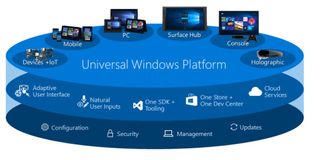
Tablets, 2-in-1s and laptops all exist in the mobile space, and Windows runs on all of these devices.
Last December, Microsoft announced Windows on ARM, which will make its debut on a range of cellular PCs in the fourth quarter of this year. In my estimation, these cellular PCs will be the harbingers of a cellular-capable ultimate mobile device or ultramobile Surface with telephony.
Windows on ARM brings Microsoft's ultimate mobile device vision into view
Pieces of the whole
There is a continuity of variables that Microsoft is working on that will ultimately contribute to the company's mobile strategy. Windows Chief Terry Myerson asserted that the company's continued focus on Windows 10 Mobile's development for the investments in ARM and cellular it provides.
Those investments will certainly be borne out in part with the cellular PCs coming later this year. Full Windows on always-connected PCs also provides the peripheral benefit of an incentive for users to visit the Windows Store to replenish mobile data.
The providing of mobile data is also part of the infrastructure Microsoft is building into its mobile strategy. By providing the mobile platform, OEM devices (and maybe first-party devices at the company's devices event in China on May 23) that are always connected, and mobile data, Microsoft is constructing a comprehensive mobile platform to facilitate its mobile strategy. Added to this is the company's focus on bringing Win32 apps to the Universal Windows Platform (UWP) via Project Centennial, which modernizes the desktop experience for the current static and mobile personal computing experience.
It is within this context that I deduce that Microsoft will launch an ultramobile Surface with telephony via eSIM. As a PC first running full Windows, Microsoft will be pushing this telephony-enabled device into the mobile space, not the smartphone space. It will benefit from Microsoft's investments in cellular and ARM, the infrastructure of distributing mobile data to users, and with Continuum, facilitate the use of Win32 apps brought to the UWP via Project Centennial.
Any discussion Microsoft has about cellular capabilities in Windows 10, its strategy to provide cellular data to users, Windows 10 functionality on ARM, and the company's strategy regarding Project Centennial (and the other app bridges) bringing Win32 apps to the UWP, are Microsoft's discussing its plans for Windows on mobile.
Windows 10 S, Continuum and Project Centennial
I recently argued that Microsoft's ultimate mobile device goal is to create one device that handles all of our personal computing needs. I proposed that Microsoft would want it to be our desktop when connected to a monitor, mouse and keyboard via Continuum; a laptop when connected to an HP Lap Dock-like peripheral; and a tablet and phone with Cshell, possibly with a folding form a factor.
Window 10 S breathes life into the UWP and paves the path for the Surface phone
For Continuum to provide a real desktop experience, legacy Win32 apps need to come to the UWP. I argued that Windows S, which allows only Store apps, may in time (as OEM Windows S PCs increase in popularity) provide the incentive developers need to bring their Win32 programs to the UWP.
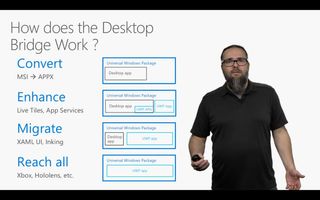
It is a process, and it has varying levels of complexity depending on the app. Windows is still being updated with supported APIs (though I am told substitute APIs can be used), but the goal of Project Centennial is to make Win32 apps full UWP apps. Within the context of Windows S, cellular PCs and Microsoft's mobile strategy, we should expect a big push of Project Centennial at Build.
Only Microsoft knows what it has in store. But unless we are surprised with an unexpected level of candor regarding Microsoft's mobile strategy, I would advise anyone watching for any mobile news to keep a sharp eye out. You should pay close attention to Windows on ARM, cellular capabilities in Windows, Project Centennial, Microsoft's providing of cellular data, and Windows S.
Read these:
If Microsoft doesn't kill at Build 2017 the Surface phone may be dead on arrival
This is what must happen first for Surface phone to succeed
Jason L Ward is a columnist at Windows Central. He provides unique big picture analysis of the complex world of Microsoft. Jason takes the small clues and gives you an insightful big picture perspective through storytelling that you won't find *anywhere* else. Seriously, this dude thinks outside the box. Follow him on Twitter at @JLTechWord. He's doing the "write" thing!
